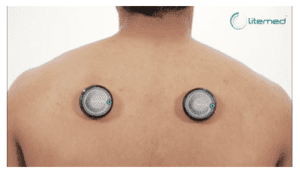Cervical radiculopathy occurs when one or more nerve roots in the cervical spine (neck) become compressed or irritated, leading to pain, numbness, tingling, and weakness in the neck, shoulders, arms, or hands. Exercises play a crucial role in managing cervical radiculopathy by relieving symptoms, improving strength, and restoring flexibility. Below is a detailed breakdown of exercises used for cervical radiculopathy, the types of exercises that are beneficial, and those that should be avoided.

Cervical Radiculopathy Exercises
Cervical radiculopathy exercises aim to alleviate nerve compression, improve neck mobility, and reduce pain. These exercises are usually part of a broader treatment plan that may also include physical therapy, medications, or surgical intervention in more severe cases.
Cervical Radiculopathy Physiotherapy Exercises
- Physiotherapy exercises focus on strengthening the muscles that support the cervical spine, improving posture, and increasing flexibility. These exercises help reduce pressure on the nerve roots and alleviate symptoms.
- Common Physiotherapy Exercises:
- Chin Tucks: Helps improve posture by strengthening the deep neck flexors, which support the cervical spine.
- Shoulder Blade Squeezes: Strengthens the muscles between the shoulder blades and upper back to support the cervical spine.
- Neck Stretches: Increases flexibility and reduces tightness in the neck muscles.
Cervical Radiculopathy Exercises Video
- There are several online resources, including videos, that demonstrate cervical radiculopathy exercises. These videos can guide patients through the proper techniques to perform these exercises safely at home or with a physiotherapist’s guidance.
- Examples: Platforms like YouTube or Physiopedia have instructional videos to show exercises like neck stretches, postural correction, and strengthening exercises tailored for cervical radiculopathy.
Exercises to Relieve Cervical Radiculopathy
- Stretching and Strengthening Exercises: The primary goal of these exercises is to relieve pressure on the compressed nerve roots, enhance muscle strength, and improve overall neck flexibility.
- Examples of Relieving Exercises:
- Neck Tilts: Gently tilt the neck from side to side to stretch the muscles.
- Neck Rotation: Slowly turn the head to each side to increase neck mobility.
- Thoracic Extension: To counteract forward head posture and reduce strain on the neck.
Cervical Radiculopathy Exercises Physiopedia
- Physiopedia is a trusted resource that offers detailed explanations of exercises specifically designed for cervical radiculopathy. It provides evidence-based exercise techniques that can be used in physical therapy programs to reduce symptoms and restore normal function.
- Link to Physiopedia Exercises: Cervical Radiculopathy Exercises on Physiopedia
Cervical Radiculopathy Exercises to Avoid
- Some exercises can worsen symptoms if they involve excessive strain or exacerbate nerve compression. It’s important to avoid exercises that put undue pressure on the neck or cause sharp pain.
- Exercises to Avoid:
- Heavy Weightlifting: Lifting heavy weights can increase pressure on the cervical spine and worsen nerve compression.
- Overextension: Avoid exercises that cause overstretching or jerking movements in the neck, as they may aggravate the nerve root.
Cervical Radiculopathy Physical Therapy Exercises
- Physical therapy exercises are designed to improve mobility, strengthen muscles, and alleviate pain caused by cervical radiculopathy.
- Key Physical Therapy Exercises:
- Neck Isometrics: Gently pressing against your hand while resisting neck movements to strengthen neck muscles.
- Strengthening the Trapezius: Strengthens the upper back muscles to improve posture and relieve neck tension.
- Postural Training: Correcting slouching posture to reduce pressure on the cervical spine.
Cervical Radiculopathy Treatment Exercises
- Treatment exercises for cervical radiculopathy aim to address pain, stiffness, and muscle weakness. These exercises are typically part of a holistic treatment plan, alongside medication and physical therapy.
- Examples of Treatment Exercises:
- Upper Trapezius Stretch: Helps release tension in the upper neck and shoulders.
- Levator Scapula Stretch: Targets tight muscles in the neck and upper back.
Cervical Spondylosis with Radiculopathy Exercises
- Cervical spondylosis is the age-related degeneration of the cervical spine that can lead to radiculopathy. Exercise is an important part of managing cervical spondylosis with radiculopathy to reduce pain and improve mobility.
- Exercises for Spondylosis and Radiculopathy:
- Neck Flexion and Extension: Gentle movements to improve flexibility and reduce stiffness.
- Strengthening: Focus on exercises that strengthen the deep neck flexors and upper back muscles to support the cervical spine.
Home Exercise Program for Cervical Radiculopathy
- A home exercise program can help patients manage cervical radiculopathy on their own by performing exercises regularly to improve flexibility, reduce pain, and strengthen muscles.
- Home Exercises:
- Neck Stretches: Gently stretch the muscles of the neck to reduce tension.
- Posture Correction Exercises: Helps ensure proper alignment of the cervical spine throughout the day.
- Self-Traction: Gentle pulling of the neck to provide relief from pressure on the nerve roots.
McKenzie Exercises for Cervical Radiculopathy
- McKenzie Method is a well-known approach in physical therapy that focuses on exercises designed to centralize pain and reduce nerve compression.
- McKenzie Exercises:
- Extension Exercises: These exercises involve arching the neck backwards to relieve pressure on the affected nerve root.
- Retraction Exercises: Gently pull the chin back to align the cervical spine and relieve nerve pressure.
Neck Exercises for Cervical Radiculopathy
- Neck exercises help strengthen the muscles that support the cervical spine and improve posture, which reduces nerve compression.
- Common Neck Exercises:
- Chin Tucks: Retract the chin to improve posture and strengthen the deep neck muscles.
- Neck Rotations: Rotate the neck gently to both sides to increase range of motion.
Radiculopathy Cervical Region Exercises
- Exercises specifically targeting the cervical region are essential in managing radiculopathy. These exercises help relieve symptoms and prevent further compression of the nerves.
- Cervical Radiculopathy Exercises:
- Neck Retraction: Helps to reduce forward head posture and alleviate strain on the neck.
- Scapular Stabilization: Strengthens muscles around the shoulder blades, improving posture and reducing strain on the neck.
Exercises play a critical role in the management and treatment of cervical radiculopathy. Physical therapy exercises, McKenzie exercises, and neck-specific exercises help relieve pain, improve mobility, and strengthen muscles supporting the cervical spine. However, it’s important to avoid certain exercises that could worsen symptoms, such as heavy weightlifting or exercises that involve overstretching the neck. Regular, controlled exercises that focus on improving posture and flexibility are key components of managing cervical radiculopathy.
Curapod is a medical device that uses electrical stimulation to help alleviate nerve pain and inflammation, which is especially useful in conditions like cervical radiculopathy. Here’s how Curapod can be beneficial in the treatment of cervical radiculopathy:
How Curapod is Useful in Treating Cervical Radiculopathy
- Pain Relief:
-
- Curapod delivers transcutaneous electrical nerve stimulation (TENS), which is known to reduce pain by stimulating the sensory nerves. This helps block pain signals from reaching the brain, providing immediate relief for cervical radiculopathy patients who experience constant or sharp pain in the neck, shoulders, or arms due to nerve compression.
- Reduction of Muscle Spasms:
-
- Cervical radiculopathy often leads to muscle spasms around the neck and shoulders, which can aggravate nerve compression and worsen symptoms. Curapod’s electrical stimulation helps relax the muscles, reducing spasms and alleviating pressure on the affected nerve roots.
 Improved Nerve Healing:
Improved Nerve Healing:
-
- Electrical stimulation from Curapod has been shown to enhance circulation in the affected area, promoting the healing process of the nerves. This is crucial in conditions like cervical radiculopathy where nerve roots are inflamed or compressed, helping to reduce inflammation and encourage recovery.
- Support in Physical Therapy Exercises:
-
- As part of a comprehensive treatment plan that includes physical therapy exercises, Curapod can help make the exercises more effective by reducing pain and discomfort, allowing patients to perform neck strengthening exercises and stretching routines with less pain. This combination of electrical stimulation and therapeutic exercises can accelerate recovery.
- Non-invasive Treatment:
-
- Curapod is a non-invasive treatment, making it suitable for patients who may not want to undergo invasive procedures like surgery or who are looking for alternative pain relief methods. It can be used alongside other treatments such as physical therapy or medications to manage symptoms.
- Ease of Use at Home:
-
- One of the benefits of Curapod is that it is portable and can be used at home, providing patients with the ability to manage their symptoms independently. This allows for continuous pain relief, especially during off-hours when the patient is not attending therapy sessions.
Integration with Exercises and Other Treatments
Curapod can be integrated with exercise programs for cervical radiculopathy, such as those focused on strengthening the neck and upper back muscles, improving posture, and increasing flexibility. By combining Curapod’s electrical stimulation with targeted physical therapy exercises, patients can experience enhanced pain relief and functional improvement, making this approach highly effective.
References (Cardiff Harvard Style)
- Physiopedia, 2023. Cervical Radiculopathy Exercises. Available at: https://www.physio-pedia.com/Cervical_Radiculopathy_Exercises [Accessed 16 February 2025].
- Spine-Health, 2022. Exercises for Cervical Radiculopathy. Available at: https://www.spine-health.com/conditions/neck-pain/exercises-cervical-radiculopathy [Accessed 16 February 2025].
- National Institute of Neurological Disorders and Stroke (NINDS), 2021. Cervical Radiculopathy. Available at: https://www.ninds.nih.gov/health-information/disorders/cervical-radiculopathy [Accessed 16 February 2025].
- McKenzie Institute International, 2020. McKenzie Method for Cervical Radiculopathy. Available at: https://www.mckenziemethod.com/what-is-mckenzie [Accessed 16 February 2025]


